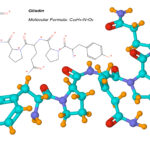By Annette Pinder
Doctors and patients have many different tools available in the war against cancer. Imaging is an essential resource in helping to screen, diagnose, guide treatments, and determine the efficacy of various therapies. Advancements in imaging have a profound effect on managing, preventing, and curing cancer.
The goal of cancer imaging is to detect the smallest possible number of tumor cells at the earliest possible time. Traditionally, X-ray, ultrasound, magnetic resonance imaging, single-photon emission computed tomography, and positron emission tomography are utilized as key cancer imaging techniques. These technologies continue to advance as new technologies are being explored to greatly enhance understanding of various cancers.
The most important aspect of cancer prevention is patient awareness and compliance with cancer screening. According to the American Cancer Society, more than half of all cancer deaths could be prevented if people were screened regularly for breast, colon, lung, and prostate cancers which, when found early, can be more effectively treated. Also important are the screening options available today. For example, 3D mammography, first available in Western New York at Windsong Radiology, has transformed the ability to detect breast cancer in women with dense breast tissue, and in those with a high risk for the disease.
Dr. Raja S. Cheruvu of Windsong also emphasizes the importance of lung cancer screening. “Lung cancer is the number one cause of cancer-related deaths in both men and women. Patients screened regularly have a much better chance of survival from this deadly form of cancer that is typically not diagnosed until it has progressed to a later stage. To counteract this, Windsong navigators work closely with patients and providers to ensure that annual screenings are not missed,” says Dr. Cheruvu.
Prostate cancer remains the number one killer for men. A blood test to determine prostate-specific antigen (PSA) levels is vital in detecting cancer. Those with elevated PSA-levels are typically referred for an ultrasound-guided biopsy. Unfortunately, this biopsy can be painful, carry a risk of infection, and yield false-negative results, which is why Dr. Cheruvu encourages more physicians and patients to inquire about 3T MRI screening, which is painless and can detect prostate cancer at its earliest stage.
Colon cancer is the third most commonly diagnosed cancer in the US in both men and women. While colonoscopy is the most common screening method, virtual colonoscopies, a minimally invasive exam that does not require sedation, produces a cross-sectional image of the abdominal organs, and a detailed view inside the colon and rectum. This option is available to individuals who are reluctant to have a colonoscopy, or who are at risk of colonoscopy complications.
Imaging plays a key role in cancer diagnoses and therapies. Improvements in cancer imaging and awareness of the importance of regular screenings can improve treatment plans now and in the future. The time to begin screening and the frequency of screening can change depending upon family history. Individuals should talk to their doctor about their family risk, and get screened regularly. Contact Windsong to schedule your screenings at 716-631-2500 or visit windsongradiology.com to request an appointment online.












